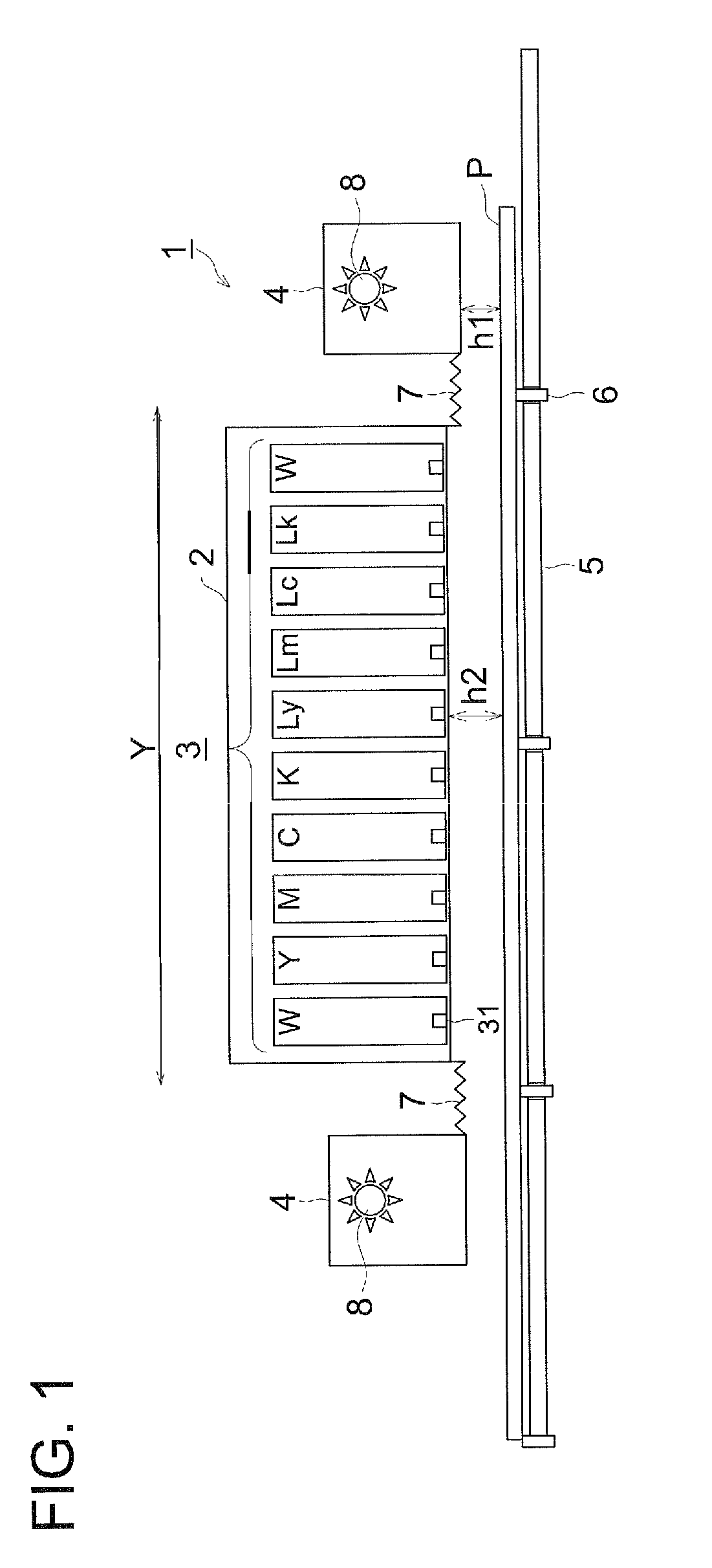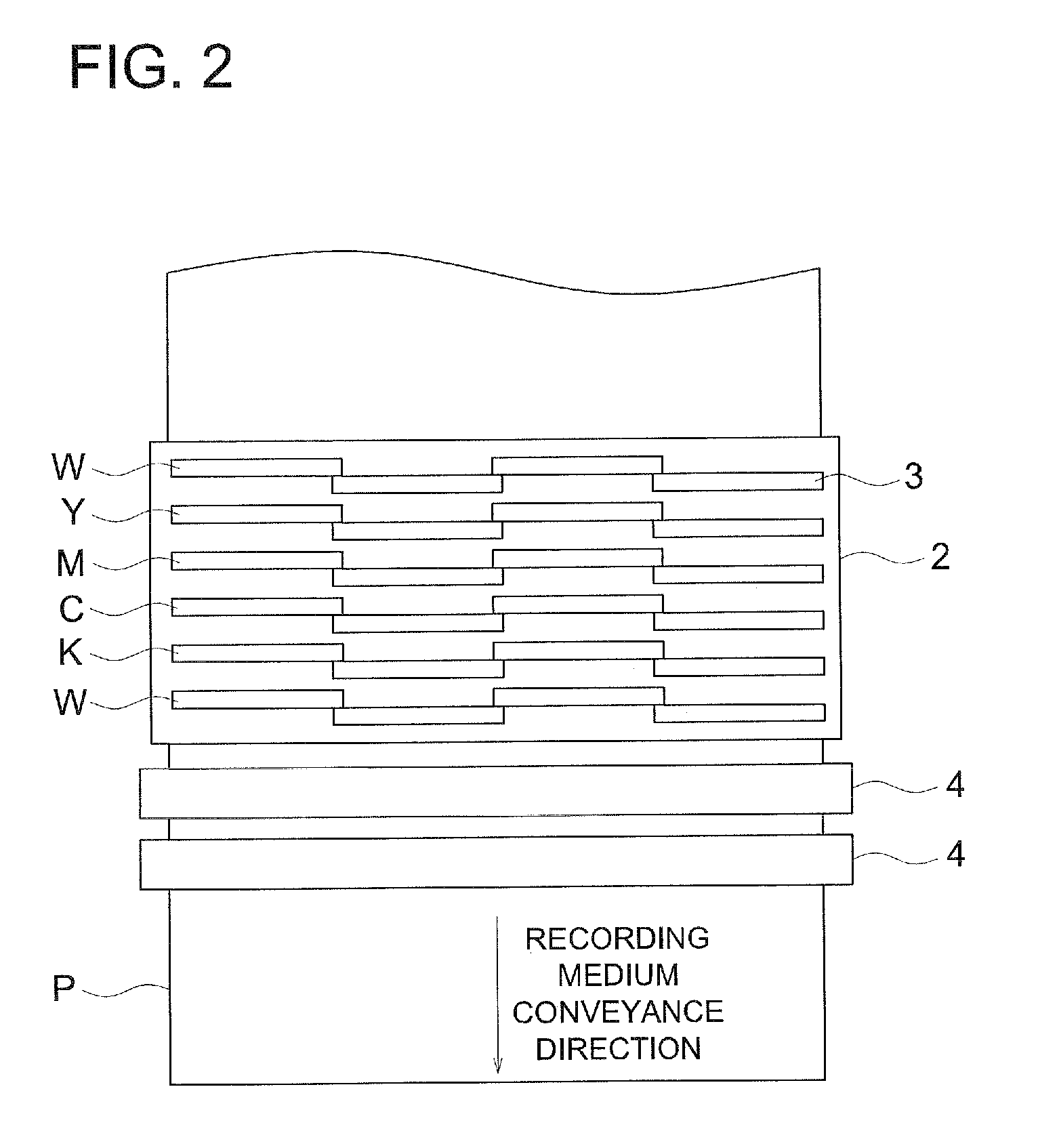Actinic energy radiation curable ink-jet ink, ink-jet recording method, and printed matter
a technology of actinic energy radiation and inkjet ink, which is applied in the field of newly developed actinic energy radiation curable inkjet ink, inkjet recording method, printed matter, etc., can solve the problems of large film thickness, safety and odor problems, and impaired adhesion to recording medium, and achieves excellent curing, long exposure time, and high robustness.
- Summary
- Abstract
- Description
- Claims
- Application Information
AI Technical Summary
Benefits of technology
Problems solved by technology
Method used
Image
Examples
example 1
[0257]>
[0258][Preparation of Pigment Dispersions]
[0259]Pigment dispersions 1-5 each were obtained by dispersing, at the same time, the pigment, pigment disperser A (AJISPER P13824, produced by Ajinomoto Fine-Techno Co., Inc.), and triethylene glycol divinyl ether (VE-1) described in Table 1 in a sand mill for 4 hours.
[0260][Preparation of Inks 1-27]
[0261]Subsequently, as described in Table 1, cationically polymerizable compounds, a polymer (polymer A), a photo-cationic polymerization initiator (PI-1), a cationic polymerization inhibitor (2MAE), and a sensitizer (DEA) were added to each of the thus-prepared pigment dispersion at a predetermined amount of each and the resulting mixture was dissolved, followed by filtration using a membrane filter of 0.85 μm to prepare inks 1-27.
[0262]Herein, the pigments and the disperser used to prepare above inks 1-27 were used after having been washed with ion-exchange water and dehydrated to dryness. Further, each cationically polymerizable compou...
example 2
[0346]>
[0347]Inks 28-44 each having the constitution listed in Table 3 were prepared in the same manner as in the preparation method of ink 9 described in Example 1.
[0348]Herein, in the same manner as in Example 1, a pigment and a disperser used in Example 2 were previously washed with ion-exchange water and dehydrated to dryness. Polymerizable compounds were previously distilled for purification and halogen ions were sufficiently eliminated. A photo-cationic polymerization initiator was washed with ion-exchange water and dehydrated to dryness. Further, the number of times of methanol washing and ion-exchange water washing was appropriately controlled to adjust thermally acid generating amount (the difference in hydrogen ion concentration (mol / L) in solutions before and after refluxing treatment when a dioxane solution of 0.02 mol / L of a photolytically acid generating agent is refluxed for 20 hours) at 1.0×10−4 mol / L.
[0349]According to determination via an ion chromatographic method...
example 3
[0385]>
[0386]Inks 45-48 each having the constitution listed in Table 5 were prepared in the same manner as in the preparation method of ink 8 described in Example 1. Herein, in the same manner as in Example 1, a pigment and a disperser used in Example 3 were previously washed with ion-exchange water and dehydrated to dryness. Polymerizable compounds were previously distilled for purification and halogen ions were sufficiently eliminated.
[0387]As a photo-cationic polymerization initiator, PI-2 (di(4-methoxyphenyl)(4-methylphenyl)sulfonium hexafluorophosphate) was washed with ion-exchange water and dehydrated to dryness. Further, the number of times of methanol washing and ion-exchange water washing was appropriately controlled to achieve the thermally acid generating amount described in Table 5. Herein, PI-2 was used for ink preparation in the forte of a solution (50% by mass solution) of di(4-methoxyphenyl)(4-methylphenyl)sulfonium hexafluorophosphate dissolved in propylene carbonat...
PUM
| Property | Measurement | Unit |
|---|---|---|
| viscosity | aaaaa | aaaaa |
| surface tension | aaaaa | aaaaa |
| viscosity | aaaaa | aaaaa |
Abstract
Description
Claims
Application Information
 Login to View More
Login to View More - R&D
- Intellectual Property
- Life Sciences
- Materials
- Tech Scout
- Unparalleled Data Quality
- Higher Quality Content
- 60% Fewer Hallucinations
Browse by: Latest US Patents, China's latest patents, Technical Efficacy Thesaurus, Application Domain, Technology Topic, Popular Technical Reports.
© 2025 PatSnap. All rights reserved.Legal|Privacy policy|Modern Slavery Act Transparency Statement|Sitemap|About US| Contact US: help@patsnap.com



